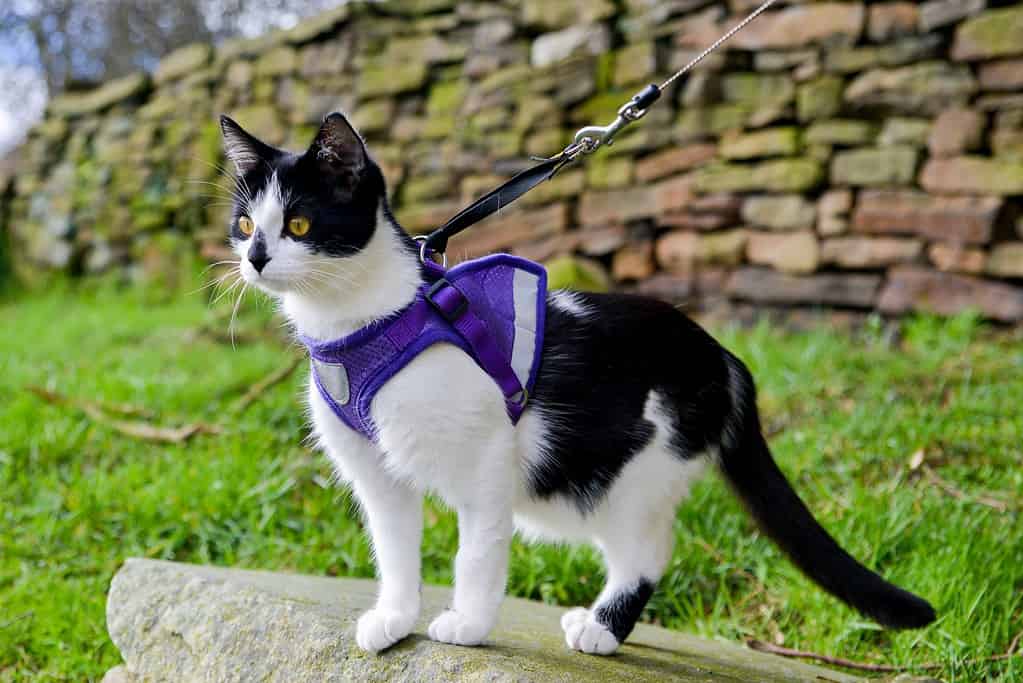If you’re a cat lover, you know what it’s like to pass a street kitty and wonder where it rests its head at night. You’ve also probably been talked out of rescuing a sweet street-roaming cat (or two or 10!). When it comes to indoor cats vs. outdoor cats, there are critical aspects to consider for each. Let’s dig in!
7 Critical Aspects to Consider
- Nutrition
- Shelter
- Safety
- Injuries
- Illnesses
- Social needs
- Lifestyle
Indoor vs. Outdoor Cat: Which Is Better?
If you ask an expert, the better choice for cats is an indoor lifestyle where they don’t have to face predators and the elements. Indoor, you can provide them with the nutrition they require, and they can enjoy the love and affection of their human counterparts (as well as other pets!). Plus, if they get sick or injured, you can get them emergency veterinary care right away. Overall, indoor cats live longer, healthier lives.
Having an indoor cat has a lot of benefits but there are several critical aspects to consider. These cats are less likely to be exposed to parasites, and they can enjoy a disease-free environment. Indoor cats can eat the right foods when they need to and don’t need to take a chance on ingesting something harmful out of sheer hunger. They enjoy life even more if there is a second cat at home. They groom each other, offering affection, connection, and shared cleanliness. Many cats even do great with dogs! They can enjoy a good workout together as the dog might chase the cat. Both get playtime and physical exercise.

Cats and dogs can make great companions, keeping each other entertained both mentally and physically.
©Sarah Verheul/Shutterstock.com
Indoor cats become more affectionate as they become accustomed to having their owners near them. If they are not properly taken care of, they can become anxious, obese, or just bored. Indoor cats generally have a lifespan of 10 to 20 years. They need some kind of stimulation as they are highly intelligent, and they need to be mentally and physically stimulated or can become restless. It can be expensive to buy new toys for them continuously, but here’s a trick: hide old toys and get them out a few weeks later. They are once again intrigued as these put-away toys have a different scent than what they remember.
Having outdoor cats is definitely a lot riskier, even though you might think that is where they belong, depending on your experiences with pets. However, their life lifespan is dramatically reduced by several years. They may only live five years if they make it past the kitten stage. The moment they walk outside, they can get infections or fleas from other cats. Cars may injure them, coyotes may chase them, and more! Cats in the wild can hunt birds and small mammals but no matter how good they are at hunting; they also take a chance on becoming prey.
Is It Okay to Have an Indoor-Outdoor Cat?
It is not a good idea to have an indoor-outdoor cat, as it can be too risky. Outside of your home, it is survival time and can be highly stressful. People with nefarious intentions may also steal cats they find. Outdoor cats don’t always have food readily available for them either (unless you place food outside which can also attract predators). If you feel strongly about your cat having an outdoor experience, try using a harness outside where you can watch and wait for their reaction. If they feel comfortable, maybe you can extend their time outdoors under your watchful eye.

A harness allows your kitty to explore the outdoors with you in tow, ensuring its safety.
©Abi’s Photos/Shutterstock.com
Now, some rescue cats want and demand an outdoor lifestyle and there’s no changing their desire for the outdoors. In these cases, to not stress out your cat by locking them indoors, they should have access to leave and return as they please. They still face the same risks, but if they have been living in the streets, they are quite street-smart. Some owners go the extra mile and build large catios to keep their kitties safe while outdoors, but this isn’t always a feasible option. The other situation when an outdoor cat may be a necessity is in the country. Barn cats are common — they take care of the property’s rodent population and in turn, they get shelter, food, and the true spice of life: the hunting experience.
Indoor vs. Outdoor Cats: Which Are More Affectionate?
Indoor cats tend to be more affectionate because they interact with humans a lot more. They form bonds with their caregivers early on, especially when they’re bottle-raised or when they come into the family home as kittens. That’s not to say outdoor cats can’t be affectionate. It just depends on what their experiences with humans have been like. Even a mistreated feral cat can turn into a purring cuddle bug given the right care!
Thank you for reading! Have some feedback for us? Contact the AZ Animals editorial team.








